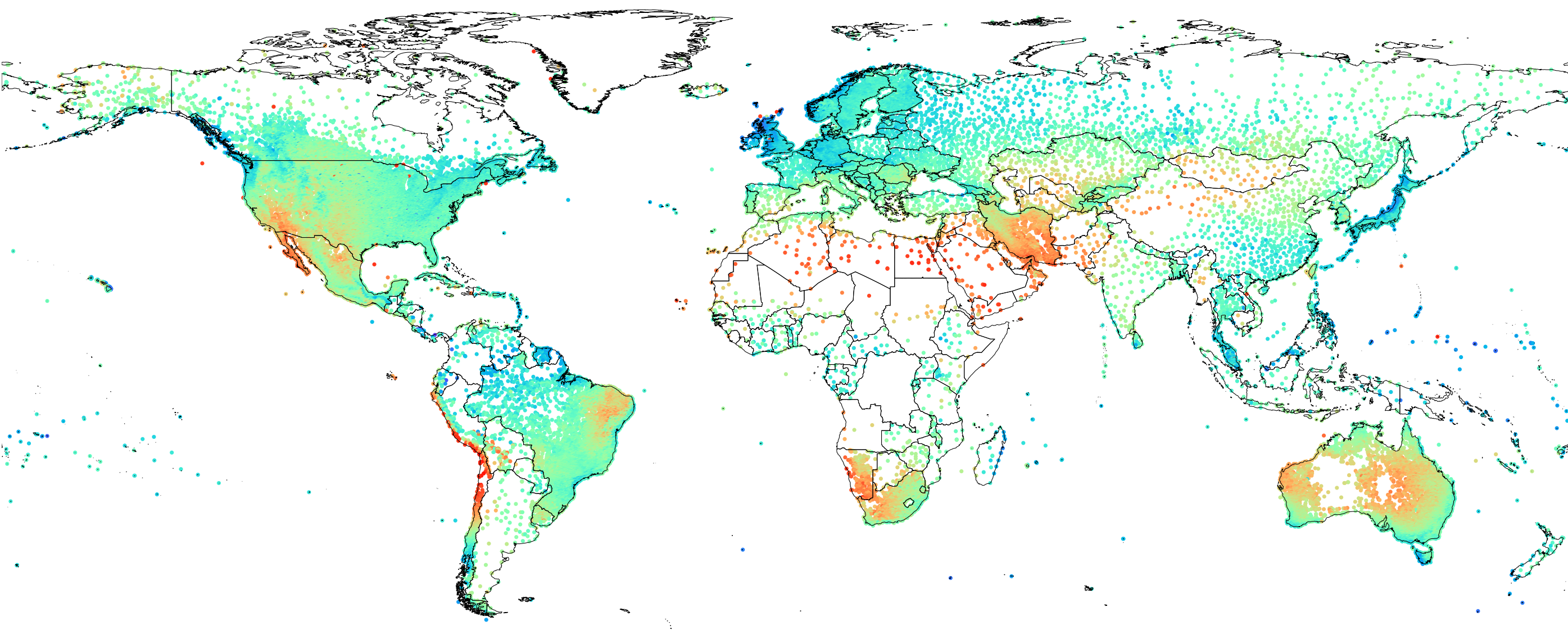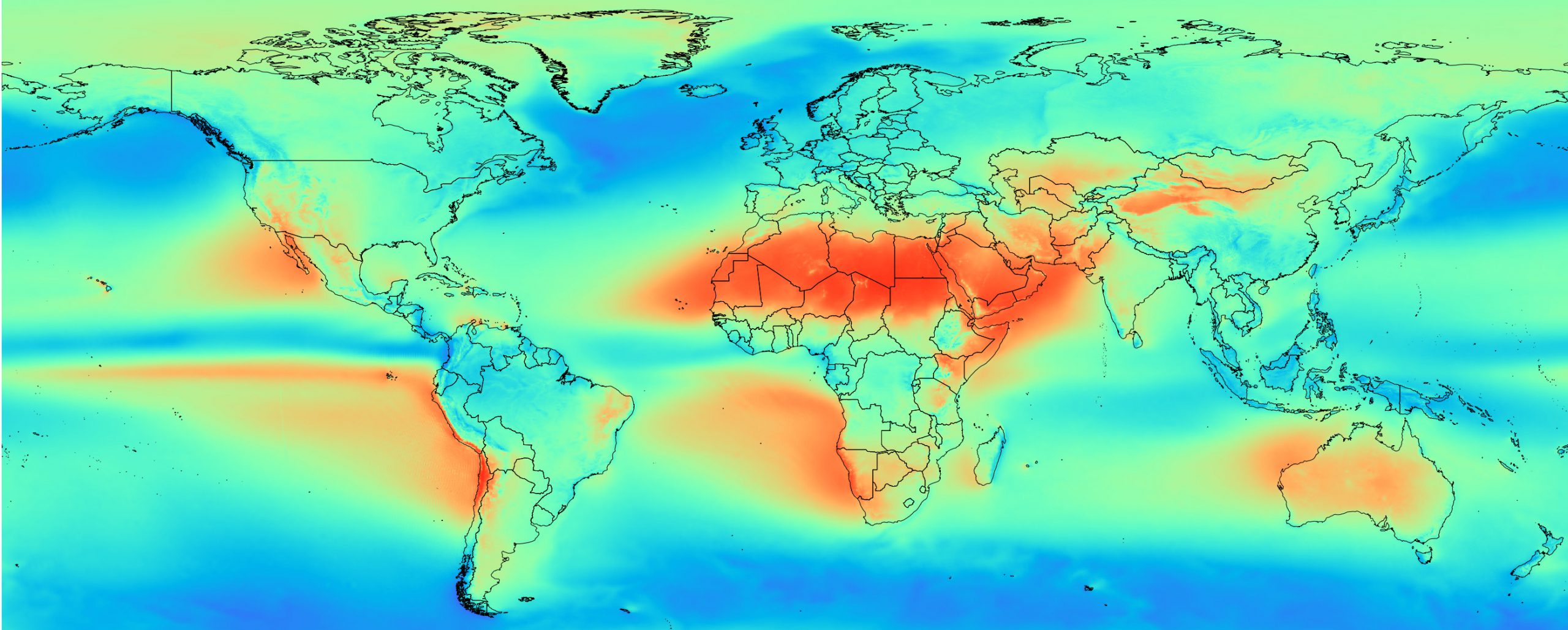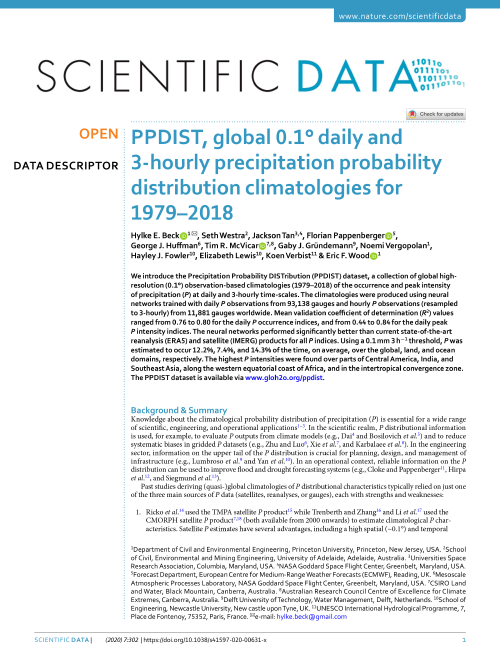PPDIST
Precipitation Probability DISTribution
Overview
The Precipitation Probability DISTribution (PPDIST) dataset represents a collection of global high-resolution (0.1°) observation-based climatologies (1979–2018) of the occurrence and peak intensity of precipitation at daily and 3‑hourly time scales.
The climatologies were produced using neural network ensembles and take advantage of the strengths of all three main precipitation data sources — satellites, reanalyses, and gauges — to obtain reliable estimates for the entire globe. For more information, see the following open-access paper:
The climatologies were produced using neural network ensembles and take advantage of the strengths of all three main precipitation data sources — satellites, reanalyses, and gauges — to obtain reliable estimates for the entire globe. For more information, see the following open-access paper:
- Beck, H. E., Westra, S., Tan, J., Pappenberger, F., Huffman, G. J., McVicar, T. R., Gründemann, G. J., Vergopolan, N., Fowler, H. J., Lewis, E., Verbist, K., and Wood, E. F.PPDIST, global 0.1° daily and 3‑hourly precipitation probability distribution climatologies for 1979–2018 Scientific Data 7, 302 (2020)



Daily >0.5 mm precipitation occurrence (% of time)
Download
The latest version of the PPDIST dataset can be downloaded here. If the dataset forms a key component of your research, we kindly ask that you give us the opportunity to comment on your results prior to publication. The dataset is released under the CC BY-NC 4.0 license and thus may not be used for commercial purposes. By using the dataset in any publication you agree to cite the corresponding paper.
Acknowledgements
The Water Center for Arid and Semi-Arid Zones in Latin America and the Caribbean (CAZALAC) and the Centro de Ciencia del Clima y la Resiliencia (CR) 2 (FONDAP 15110009) are thanked for sharing the Mexican and Chilean gauge data, respectively. We also acknowledge the gauge data providers in the Latin American Climate Assessment and Dataset (LACA&D) project: IDEAM (Colombia), INAMEH (Venezuela), INAMHI (Ecuador), SENAMHI (Peru), SENAMHI (Bolivia), and DMC (Chile). We further wish to thank Ali Alijanian and Piyush Jain for providing additional gauge data.

